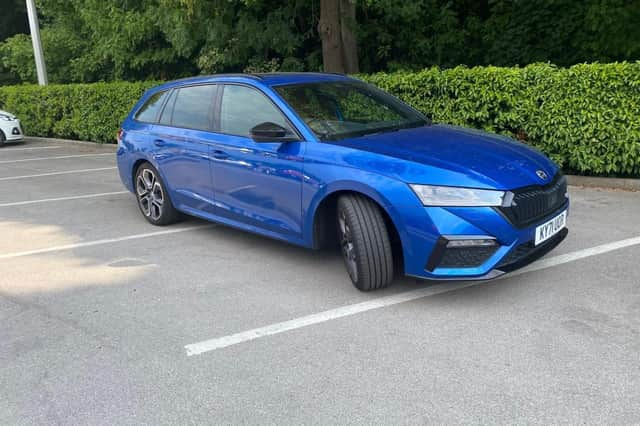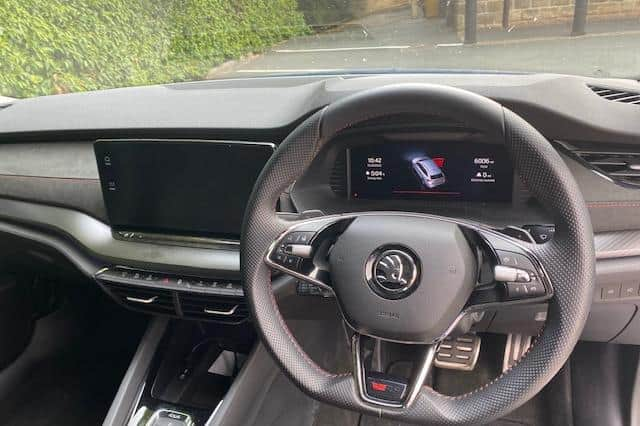How Skodas became fantasy cars


It is packed with vehicles which have impressed them during their careers.
Some choices are obvious: Porsche 911, even though the Cayman is cheaper and arguably better.
Advertisement
Hide AdAdvertisement
Hide AdOthers are less obvious: we can argue about the merits of the Volvo XC40 or the Mazda6 – two of the most under-rated cars in the world in my opinion – but there is a new contender for my made-up garage.


The Skoda Octavia estate is an excellent car, especially in the sporty vRS mode tested here.
It is solid, well-designed, neat and versatile. It has a vast load bay but still manages to appear elegant.
But what makes it stand out from other cumbersome estates is the engine in the vRS model. It has a sports car growl which really surprised me.
Advertisement
Hide AdAdvertisement
Hide AdI honestly thought I was about to be overtaken by a Lotus or a Ferrari when I heard it burble. It never occurred to me that it was my right foot that was waking the neighbours.
Vehicles like this have raised the standing of Skoda. Anyone under 50 might be mystified, but Skoda wasn’t always a renowned brand. In the 1970s and 1980s, it built cheap cars, some of which were of dubious quality.
Some in fact were very good but together with Lada, Skoda became a byword for motoring jokes.
Then Volkswagen took the company over and turned the image of the brand into middle class reliability. Skoda now occupies the territory once ruled by Volvo before the Swedish marque moved even more upmarket.
Advertisement
Hide AdAdvertisement
Hide AdIt means now Skoda is the smart, sensible, middle-class car of choice for many.
So, what is the highlight of the Octavia estate? Well, in vRS form, it is the engine which propels it from 0 to 60mph in 7.1 seconds. The engine comes with different mode settings but even in normal in sounds sporty.
In fact when I first put my foot down I was convinced a Porsche or a Lamborghini was about to overtake. It took me a few seconds to appreciate the ground-shaking purr was being caused by my right foot.
It is a long, elegant car with styling which won’t date easily. It has a great boot, deep and wide and which can hold up to 1,700 litres of luggage.
Advertisement
Hide AdAdvertisement
Hide AdThe wheels are smart 19in alloys and the cabin is typical Volkswagen Group with easy to handle switchgear. The car is highly computerised and it can take a little fathoming . For example, I had to park up and spend a few minutes to deduce how to switch off the air conditioning.
But I must say the air con was incredibly powerful and very useful during the recent heatwaves.
This is the fourth generation since the modern-day Octavia’s launch in 1996 and it is Skoda’s best seller. With more than seven million produced, the Octavia is the bestselling Skoda ever. Octavia is the brand’s only model to be made in four countries: it rolls off production lines in the Czech Republic, China, Russia and India.
This model has chrome trim, Alcantara padded dash panel with contrast stitching and aluminium pedals to emphasise its sportiness.
Advertisement
Hide AdAdvertisement
Hide AdThe Climatronic dual-zone air conditioning, we have already touched upon, but it also has a wonderful satellite navigation system, DAB radio, parking sensors and a parking assist system.
The steering is light enough for town driving but it has a progressive system which gives more feel the harder you drive. The sports suspension is firm enough to be effective but still offers comfort. It is 15mm lower than the standard car.
The reasons for the Octavia’s success story are obvious: In addition to generous amounts of space and excellent value for money, the brand’s heart and engine provides an impressive level of safety too – as illustrated by its five-star rating in the Euro NCAP tests. In its fourth generation, the Octavia offers numerous innovative safety and assistance systems.
These include Adaptive Lane Assist, which is able to identify roadworks as well as conventional road markings, and the Local Traffic Warning function that automatically warns of traffic hold-ups in the car’s vicinity, such as the end of a traffic jam. For the first time, Skoda is offering the new head-up display for the Octavia; this projects information such as the car’s speed, navigation instructions, detected traffic signs and activated driver assistance systems directly onto the windscreen.
Advertisement
Hide AdAdvertisement
Hide AdAbove all, it’s a fun car to drive, and you can’t say that about many estates.
Skoda Octavia estate 2.0 vRS
Price: £37,970. As tested it cost £40,935 because it has a tow bar (£1,025), panoramic sunroof (£1,235) and winter pack with heated front seats (£510)
Engine: a 2.0 litre 200ps diesel engine with a seven-speed gearbox
Economy: 49.6mpg combined
Performance: Top speed 149mph and 0 to 60mph in 7.1 seconds
Emissions: 147g/km
Warranty: Three years, 60,000 miles